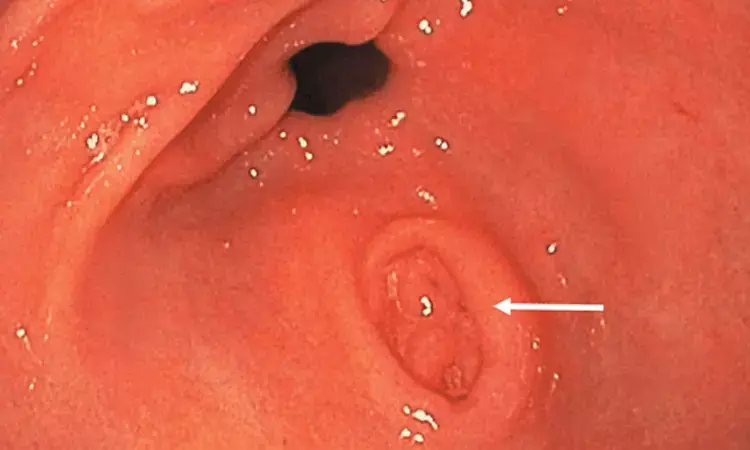- Home
- Medical news & Guidelines
- Anesthesiology
- Cardiology and CTVS
- Critical Care
- Dentistry
- Dermatology
- Diabetes and Endocrinology
- ENT
- Gastroenterology
- Medicine
- Nephrology
- Neurology
- Obstretics-Gynaecology
- Oncology
- Ophthalmology
- Orthopaedics
- Pediatrics-Neonatology
- Psychiatry
- Pulmonology
- Radiology
- Surgery
- Urology
- Laboratory Medicine
- Diet
- Nursing
- Paramedical
- Physiotherapy
- Health news
- Fact Check
- Bone Health Fact Check
- Brain Health Fact Check
- Cancer Related Fact Check
- Child Care Fact Check
- Dental and oral health fact check
- Diabetes and metabolic health fact check
- Diet and Nutrition Fact Check
- Eye and ENT Care Fact Check
- Fitness fact check
- Gut health fact check
- Heart health fact check
- Kidney health fact check
- Medical education fact check
- Men's health fact check
- Respiratory fact check
- Skin and hair care fact check
- Vaccine and Immunization fact check
- Women's health fact check
- AYUSH
- State News
- Andaman and Nicobar Islands
- Andhra Pradesh
- Arunachal Pradesh
- Assam
- Bihar
- Chandigarh
- Chattisgarh
- Dadra and Nagar Haveli
- Daman and Diu
- Delhi
- Goa
- Gujarat
- Haryana
- Himachal Pradesh
- Jammu & Kashmir
- Jharkhand
- Karnataka
- Kerala
- Ladakh
- Lakshadweep
- Madhya Pradesh
- Maharashtra
- Manipur
- Meghalaya
- Mizoram
- Nagaland
- Odisha
- Puducherry
- Punjab
- Rajasthan
- Sikkim
- Tamil Nadu
- Telangana
- Tripura
- Uttar Pradesh
- Uttrakhand
- West Bengal
- Medical Education
- Industry
Endoscopic ultrasonography increases diagnostic accuracy of upper GI submucosal lesions

It is difficult to differentiate between diverse forms of submucosal lesions (SMLs) during regular endoscopy. Different pathogenic kinds of SMLs exhibit a wide range of biological activities.
Endoscopic ultrasonography (EUS) offers high diagnostic value for the identification of upper gastrointestinal SMLs based on lesion size and muscle layer of origin, according to one research. The diagnostic accuracy of Endoscopic ultrasonography (EUS) lesions is related to the origin, with the mucosal muscularis layer having the highest diagnostic accuracy. Stromal tumours larger than 3 cm in diameter and with a surface ulcer on EUS are considered to be moderate or high risk for invasion.
The findings were published in Journal of BMC Gastroenterology on 7th October, 2021.
The goal of this study, carried out by Qian Su and colleagues, was to assess the accuracy of endoscopic ultrasonography (EUS) in the identification of upper gastrointestinal submucosal lesions (SMLs).
Adult patients with SMLs diagnosed and treated at Central South University's Third Xiangya Hospital from November 2014 to December 2020 were included in this retrospective analysis, and their clinical data were obtained. After fasting for eight hours before the surgery and getting written informed permission, oral gel was used for local anesthetic and intravenous Propofol was used for sedation. According to the results of the regular endoscopy, a mini-probe or linear array ultrasound probe was employed selectively.
SMLs were discovered in the stomach (159 patients), esophagus (63 individuals), and duodenum in this investigation (9 patients). The final pathology revealed that the most prevalent forms of SMLs were stromal tumours and leiomyomas. Stromal tumours were found more frequently in the stomach, whereas leiomyomas were found more frequently in the esophagus. Researchers discovered that EUS has a high diagnostic value for SMLs. Similar to earlier research, the diagnostic consistency rate of EUS was 80.4 percent for stromal tumours and 68.0 percent for leiomyomas. Furthermore, the sensitivity, specificity, positive predictive value, and negative predictive value in differentiating these two illnesses based on the tumor's originating layer were determined. The findings revealed that if the lesion began in the muscularis propria, it was more likely to be a stromal tumour, but if it originated in the muscularis mucosa, it was more likely to be a leiomyoma.
In conclusion, EUS has a high diagnostic yield for upper gastrointestinal SMLs. It may be useful to identify common SMLs based on lesion size and originating layer as determined by EUS. Stromal tumours with a diameter more than 3 cm and an EUS surface ulcer are more likely to be of moderate or high malignant potential. EUS is a good method for diagnosing lesions of the muscularis mucosa. The diagnosis of heterotopic pancreas, inflammation, benign cyst, glomus tumour, hamartoma, solitary fibroma, hemolymphangioma, angiogenic tumour, and angiolipoma by EUS is more challenging due to the absence of distinguishing characteristics and rarity.
Reference:
Su, Q., Peng, J., Chen, X. et al. Role of endoscopic ultrasonography for differential diagnosis of upper gastrointestinal submucosal lesions. BMC Gastroenterol 21, 365 (2021). https://doi.org/10.1186/s12876-021-01945-9
Medical Dialogues consists of a team of passionate medical/scientific writers, led by doctors and healthcare researchers. Our team efforts to bring you updated and timely news about the important happenings of the medical and healthcare sector. Our editorial team can be reached at editorial@medicaldialogues.in.
Dr Kamal Kant Kohli-MBBS, DTCD- a chest specialist with more than 30 years of practice and a flair for writing clinical articles, Dr Kamal Kant Kohli joined Medical Dialogues as a Chief Editor of Medical News. Besides writing articles, as an editor, he proofreads and verifies all the medical content published on Medical Dialogues including those coming from journals, studies,medical conferences,guidelines etc. Email: drkohli@medicaldialogues.in. Contact no. 011-43720751


